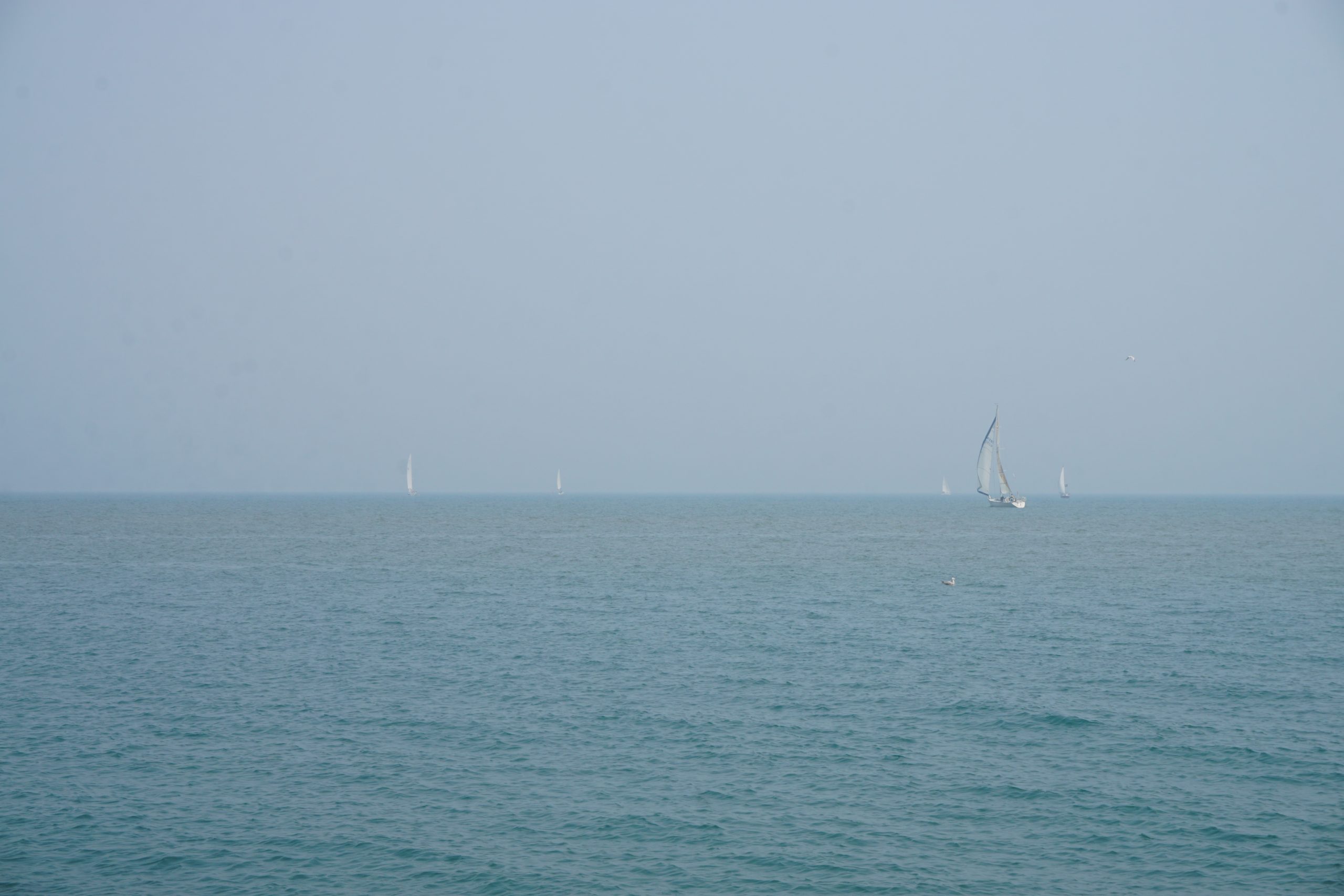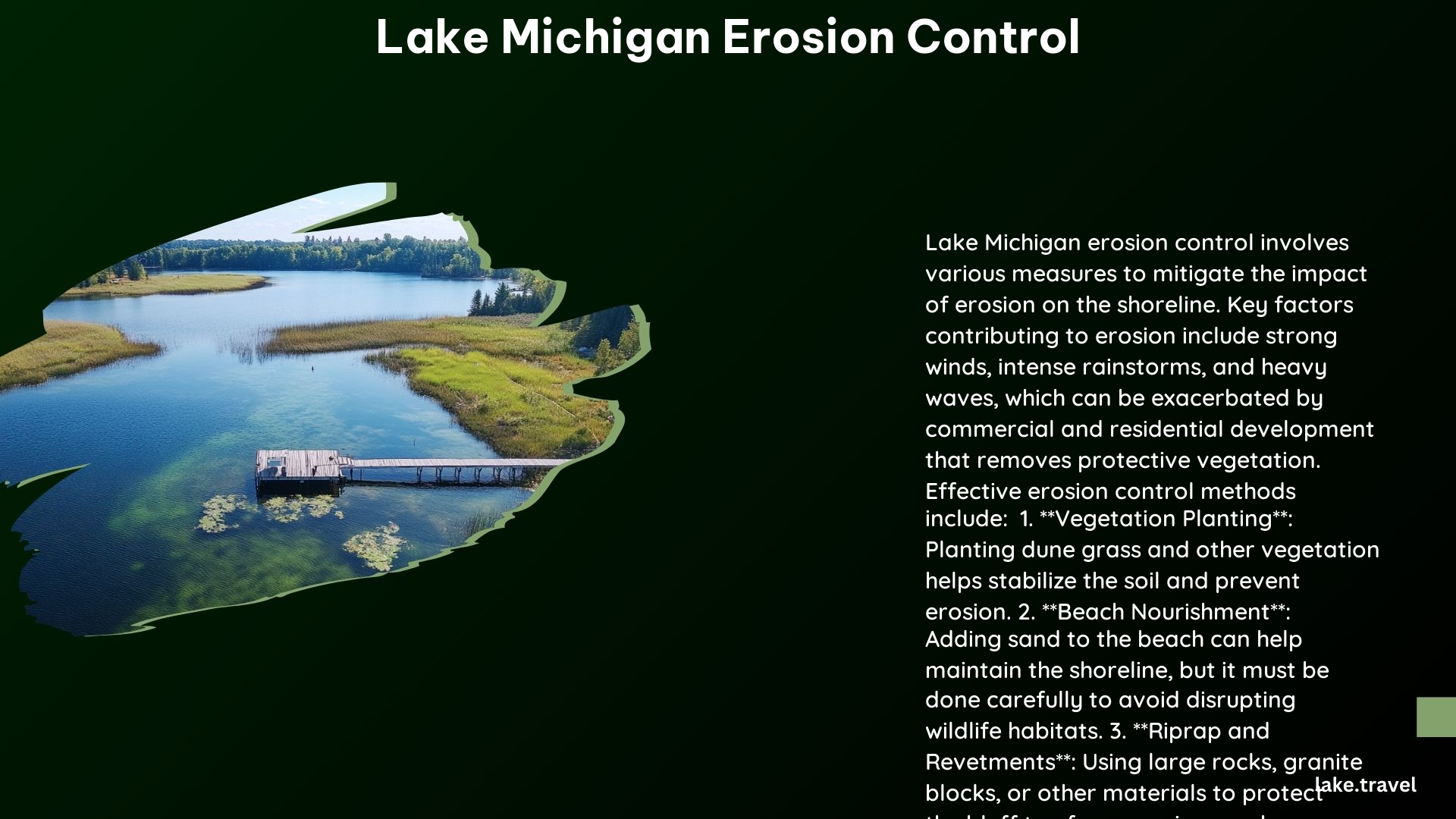Lake Michigan erosion control is a critical issue due to the constant threat of erosion along its shoreline. The Great Lakes region, including Lake Michigan, is susceptible to various factors that contribute to this problem, such as strong winds, heavy rainstorms, and human development. Addressing erosion is essential to protect the environment, preserve natural habitats, and prevent property damage.
Causes of Erosion

- Strong Winds and Waves: The powerful gusts of wind and intense waves that sweep across Lake Michigan can cause significant erosion by blowing away sand and soil, leading to the loss of plants that hold the soil in place.
- Heavy Rainstorms and Flooding: Torrential downpours and flooding events can wash away sand and soil from the shoreline, carrying it into the lake and contributing to the erosion problem.
- Commercial and Residential Development: The expansion of human development along the Great Lakes shoreline has led to increased erosion, as it often removes the natural vegetation that helps to stabilize the soil.
Environmental Impact

- Habitat Destruction: Erosion can destroy the delicate natural habitats that support a diverse array of plant and animal species, disrupting the fragile food chain.
- Sedimentation: The sediment washed into the lake can muddy the waters, interfering with the health and well-being of aquatic wildlife.
Human Impact
- Property Damage: Erosion can cause significant damage to homes, businesses, and other structures located along the Lake Michigan shoreline, posing a threat to both personal and public property.
- Loss of Beaches: As erosion continues to break away pieces of the beach, it can leave behind steep and dangerous cliffs, reducing the recreational value of the shoreline.
Effective Methods for Controlling Erosion
- Seeding and Composting: Planting dune grass and other vegetation can help to stabilize the soil and prevent further erosion.
- Beach Nourishment: Adding sand to the beach can help to replenish lost sand and provide a protective barrier against the waves.
- Geotextile Tubes: These specialized tubes can be used to create a barrier against erosion, helping to stabilize the soil and protect the shoreline.
- Riprap (Revetments): Constructing riprap using large rocks or granite blocks can help to protect the toe of the bluff from the erosive forces of the lake.
Regulatory and Permitting
- High Risk Erosion Areas (HREAs): The Michigan Department of Environment, Great Lakes, and Energy (EGLE) designates certain areas as HREAs, which are subject to additional regulations and permitting requirements to prevent structural property loss.
- Permitting: The Wisconsin Department of Natural Resources (DNR) requires authorization for any material placed in Lake Michigan and Lake Superior, and additional permits may be needed for grading and dredging activities.
Cost and Timings
The cost and timelines for erosion control projects can vary depending on the specific methods used and the extent of the project. However, here are some general estimates:
- Seeding and Composting: $5,000 to $20,000 per acre, with a timeline of several months to a year.
- Beach Nourishment: $100,000 to $500,000 per project, with a timeline of several months to a year.
- Geotextile Tubes: $50,000 to $200,000 per project, with a timeline of several months to a year.
- Riprap (Revetments): $100,000 to $500,000 per project, with a timeline of several months to a year.
Directory and Hours
- Superior Groundcover: (414) 375-4646, Monday to Friday, 8:00 AM to 5:00 PM.
- Ozaukee County Planning & Parks: (262) 238-8288, Monday to Friday, 8:00 AM to 4:30 PM.
- Wisconsin DNR: (608) 266-2621, Monday to Friday, 8:00 AM to 4:30 PM.
Value
The value of erosion control projects along Lake Michigan’s shoreline lies in their ability to protect the environment, preserve natural habitats, and prevent property damage. These projects can also enhance the aesthetic and recreational value of the shoreline, making it more appealing for visitors and residents alike.
References
- Michigan.gov. (n.d.). High Risk Erosion Areas – State of Michigan. Retrieved from https://www.michigan.gov/egle/about/organization/water-resources/shoreland-management/high-risk-erosion-areas
- Superior Groundcover. (2023). The Environmental Need for Erosion Control at Lake Michigan. Retrieved from https://www.superiorgroundcover.com/lake-michigan-erosion-control/
- Ozaukee County. (n.d.). Lake Michigan Bluff Erosion | Ozaukee County, WI – Official Website. Retrieved from https://www.ozaukeecounty.gov/947/Lake-Michigan-Bluff-Erosion
- Michigan.gov. (n.d.). [PDF] Great Lakes Shoreline Erosion – State of Michigan. Retrieved from https://www.michigan.gov/-/media/Project/Websites/egle/Documents/Programs/WRD/Shoreland/HREA-Brochure.pdf?rev=a13c29e5b1ad4e8e8dfc830895ac554b
- Wisconsin DNR. (n.d.). Resources for Great Lakes Shoreline Erosion Control Projects. Retrieved from https://dnr.wisconsin.gov/topic/Waterways/shoreline/greatLakesProcesses.html
